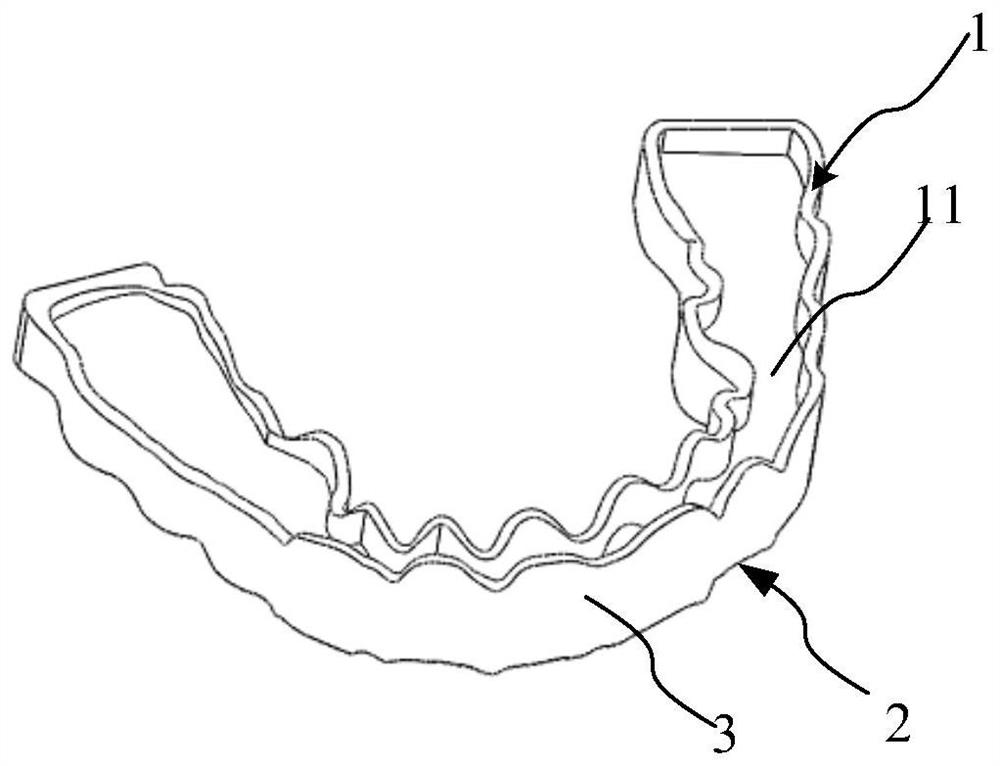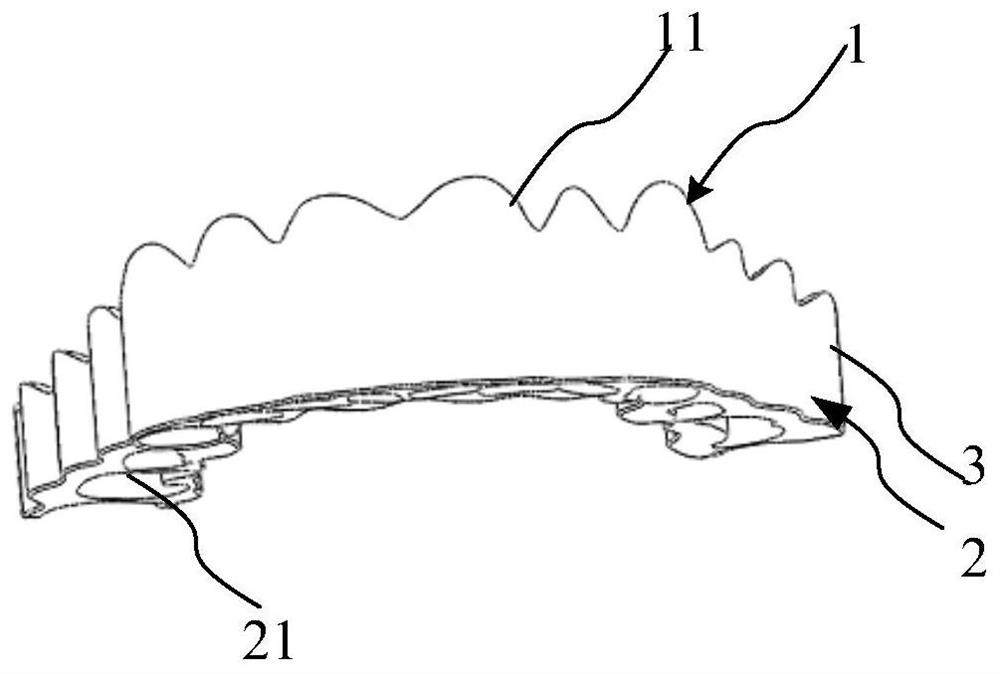Self-fixing individualized mandible retainer and construction method thereof
A construction method and self-fixing technology, applied in the field of medical devices, can solve the problems of time-consuming and labor-intensive, affecting the appearance, and poor wearing comfort.
- Summary
- Abstract
- Description
- Claims
- Application Information
AI Technical Summary
Problems solved by technology
Method used
Image
Examples
preparation example Construction
[0039] The second aspect of the present invention provides a method for preparing a self-fixating individualized mandibular retainer, the method comprising: constructing the self-fixed individualized mandibular retainer model according to the first aspect of the present invention. Fixed individualized mandibular retainer model, prepared from fixed individualized mandibular retainer. The self-fixating individualized mandibular retainer model constructed according to the construction method of the self-fixating individualized mandibular retainer model of the present invention The method for preparing the self-fixating individualized mandibular retainer should be simple for those skilled in the art It is known that, for example, oral occlusal relationship data can be obtained through CT scanning and oral scanner scanning, and can be obtained through computer digital modeling combined with 3D printing. The material used can be transparent elastic resin and the like.
[0040] The t...
Embodiment 1
[0060] 1) For patients whose mouth opening is less than 2cm before operation, CT scan can be performed before operation, with a slice thickness of 0.625mm, to collect occlusal information;
[0061] 2) Input the collected occlusal information into the computer in Dicom format, and transmit it to the analysis and processing terminal, which performs information integration and 3D reconstruction through SurgiCase CMF5.0 software.
[0062] 3) Simultaneously, the designer designs the patient's maxillary braces and the occlusal plate required for postoperative mandibular position adjustment. The specific parameters are as follows: the wall thickness of the maxillary braces retention area is 0.6-0.8mm, width 5-12mm, height 5-8mm. The wall thickness of the mandibular occlusal plate area is 2-4 mm, the width is 10-15 mm, and the height is 2 mm. The width of the occlusal junction zone is 10-15 mm, and the height is 1-2 mm. The data is transmitted to the computer output printing termina...
Embodiment 2
[0066] 1) For patients whose mouth opening exceeds 2cm before surgery, the dental model can be taken directly, and the occlusal relationship data can be obtained by scanning the model;
[0067] 2) Input the collected occlusal information into the computer in Dicom format, and transmit it to the analysis and processing terminal, which performs information integration and 3D reconstruction through SurgiCase CMF5.0 software.
[0068] 3) At the same time, the designer designs the self-fixating individualized mandibular retainer required for the patient's postoperative mandibular movement training process. The specific parameters are as follows: the wall thickness of the maxillary tooth sleeve retention area is 0.6-0.8mm, and the width is 5-12mm , the height is 5-10mm. The wall thickness of the mandibular occlusal plate area is 2-4mm, the width is 10-15mm, and the height is 3mm. The width of the occlusal junction zone is 10-15 mm, and the height is 1-2 mm. The data is transmitted...
PUM
 Login to View More
Login to View More Abstract
Description
Claims
Application Information
 Login to View More
Login to View More - R&D
- Intellectual Property
- Life Sciences
- Materials
- Tech Scout
- Unparalleled Data Quality
- Higher Quality Content
- 60% Fewer Hallucinations
Browse by: Latest US Patents, China's latest patents, Technical Efficacy Thesaurus, Application Domain, Technology Topic, Popular Technical Reports.
© 2025 PatSnap. All rights reserved.Legal|Privacy policy|Modern Slavery Act Transparency Statement|Sitemap|About US| Contact US: help@patsnap.com



